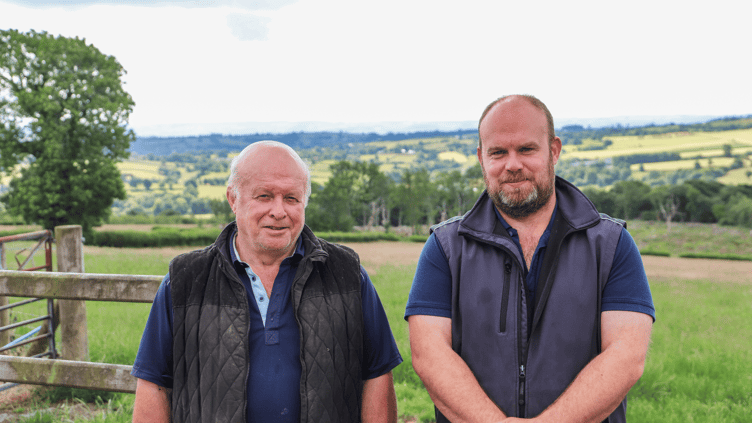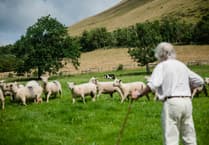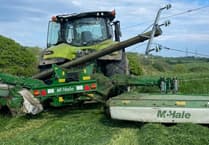A Powys sheep flock has seen a sharp drop in wormer use after adopting a more targeted approach to treatment.
Rather than routinely dosing the entire flock, Glyn and Chris Davies from Awel y Grug, Cefn Coch, Montgomershire, now only treat individual lambs that show signs of needing it – a method known as targeted selective treatment (TST).
The father-and-son team run 650 crossbred ewes and are trialling TST as part of a Farming Connect “Our Farms” project. The method uses indicators such as individual growth rates and faecal egg counts (FEC) to decide which lambs require worming.
In July, wet and warm conditions produced an FEC of 446 eggs per gram – high enough to usually warrant blanket dosing. But under the TST system, fewer than half the lambs actually needed treatment.
“Following a TST strategy has so far resulted in 855 fewer doses administered over the course of two treatment cycles, one in June and another in July, and a saving of close to £60 in drench,’’ says Owain Pugh, Farming Connect red meat sector officer for mid Wales, who is supporting the project.
“It’s a good financial saving on top of the massive benefit of reducing anthelmintic resistance developing and protecting dung beetles.’’
The move to targeted selective treatment (TST) is part of a wider programme the Davies family have developed around responsible wormer use - an effort that began in 2018 when Chris Davies joined a Farming Connect discussion group.
One of the first steps was carrying out a faecal egg count (FEC) reduction test to assess the effectiveness of white drench (1-BZ). The results showed signs of worm resistance, likely linked to over-reliance on a single anthelmintic group.
Following advice from Hafren Vets, the family now uses white drench only for treating Nematodirus when strongyle worm levels are low. For the rest of the season, they rotate between yellow (2-LV) and clear (3-ML) drenches, using orange (4-AD) and purple (5-SI) only when necessary to reduce the risk of developing resistance to these newer groups.
To support more precise treatment, the Davieses also invested in an auto-calibrated dosing gun connected to their weigh scales. The system allows them to tailor doses based on lamb weight.
For Glyn and Chris, the project has been transformative.
Dosing is now three times faster - one session took just 30 minutes - and has led to cost savings while reducing the risk of worm resistance. Chris says accurately weighing each lamb for dosing is far more effective than relying on visual estimates, which he now sees as unreliable.
“With TST we are not under or over dosing,’’ he said.
By monitoring weights more closely, the business has been able to capture higher lamb prices.
“When I can see lambs are consistently gaining weight, and rotational grazing is helping with that, I can hold off from selling them for a few weeks to allow them to gain more weight,’’ he said.
“In the past I would have been aiming to sell them as quickly as possible.’’





Comments
This article has no comments yet. Be the first to leave a comment.